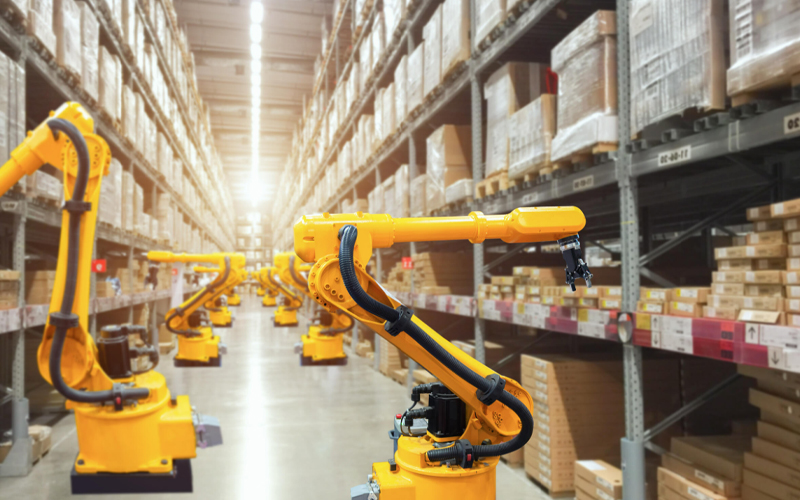According to a leading management consulting company, generative AI will significantly impact enterprises over the next decade. To put things in numbers:
- 40% of enterprises will use embedded conversational AI in their applications by 2024.
- 30% of enterprises will implement AI-augmented development by 2025.
- Generative AI will automate 60% of website and mobile app design by 2026.
- AI will generate nearly 15% of new applications without human intervention by 2027.
Generative AI is the steam engine, electricity, and internet of the later part of the 21st century. It will completely disrupt the way our customers interact with our businesses. This article explains generative AI, its benefits and applications, and its best practices.
What Are Generative AI Systems and How Do They Work?
Generative AI systems use a large volume of training data from existing artefacts to generate new and realistic output at scale. They only reflects the characteristics of training data but does not replicate or repeat it. Generative AI systems to produce images, music, audio, text, speech, designs, and software code with minimal human intervention.
In simple words, generative AI systems use computer algorithms to create responses resembling human interaction. They generate output that is easy to understand, descriptive, and personalised with actionable outcomes.
Key Benefits of Generative AI Systems in Business Operations
Generative AI systems augment humans and machines to execute business processes and activities. It enhances customer experience, accelerates product development, and elevates employee productivity. According to a survey, 38% of businesses use generative AI systems or better customer experience and retention, 26% for revenue growth, 17% for cost optimisation, and 7% for business continuity. The specific benefits depend on the use cases, but some common ones are –
Newer revenue opportunities
Create new products quickly and efficiently with generative AI systems. These could include software, mobile apps, drugs, new fragrances and flavours, alloys, and more. As you see, generative AI produces newer revenue opportunities in diverse industries.
High productivity at low cost
Employees no longer do mundane, repetitive work but conceive, nurture, refine, and execute ideas. Generative AI systems augment the productivity of human workers by letting generative AI edit text, generate images and audio, simplify content, and generate and translate software code at scale.
Risk mitigation
Generative AI systems provide provides a deeper and broader visibility of your business data. This includes customer transactions, faulty software codes, financial frauds, etc. It learns to detect patterns that humans can easily miss, thus reducing potential risks to the business.
Analytics and decision-making
Transform how you interact with business systems to analyse data and make decisions. Access data through natural language processing (NLP) to take decision-making to a new level. Let the AI extract data from diverse systems within the organisation, interpret it, and present cutting-edge analytics that put you ahead of the market competition.
Business process optimisation
From procurement to production, redefining marketing operations, sales, and customer service, you have a wide range of mission-critical business processes. Generative AI systems analyze the data from these processes, identifies areas for optimisation, and recommends KPIs through analytics.
Automation
Automation is not just about AI chatbots talking to customers. Generative AI systems can have a direct impact on the bottom line. For example, an e-commerce business that relies on efficient supply chains can automate delivery notes and invoice scanning, read QR codes and generate acknowledgements for the supplier, and release payments on time.
Best Practices for Implementing Generative AI Systems in Business
You need several best practices to ensure the ethical use of generative AI so that it enhances your business’s productivity and efficiency –
- Internal testing – Test generative AI systems internally before rolling it out for external customers. Include stakeholders and ask them to do a test run of the system. This reduces any harm to the business when the AI goes live.
- Be transparent – Tell your staff, stakeholders, and customers clearly that they are interacting with AI and not an actual human. This sets the expectations right and reduces the chances of any conflict.
- Do due diligence – AI is not a fire-and-forget system. Regularly check, validate, and test the AI model to prevent it from going off the course. Set up processes to track any issues with trustworthiness and biases within the AI model.
- Handle privacy and security issues – Check and ensure that the machine learning model that powers your AI system does not ingest, interpret, or display the private information of a customer, stakeholder, or employee.
- Take it step-by-step – After testing the AI model internally, keep it in the beta stage for some time. This lowers the initial euphoria and sets the expectations right.
*For organisations on the digital transformation journey, agility is key in responding to a rapidly changing technology and business landscape. Now more than ever, it is crucial to deliver and exceed organisational expectations with a robust digital mindset backed by innovation. Enabling businesses to sense, learn, respond, and evolve like living organisms will be imperative for business excellence. A comprehensive yet modular suite of services is doing precisely that. Equipping organisations with intuitive decision-making automatically at scale, actionable insights based on real-time solutions, anytime/anywhere experience, and in-depth data visibility across functions leading to hyper-productivity, Live Enterprise is building connected organisations that are innovating collaboratively for the future.
How can Infosys BPM help with Generative AI Systems?
Infosys BPM Generative AI Business Operations platform is a set of services, solutions, and platforms that help enterprises in value creation, generative evolution, and automation.
Read more about the Infosys BPM Generative AI for Business Operations platform.








